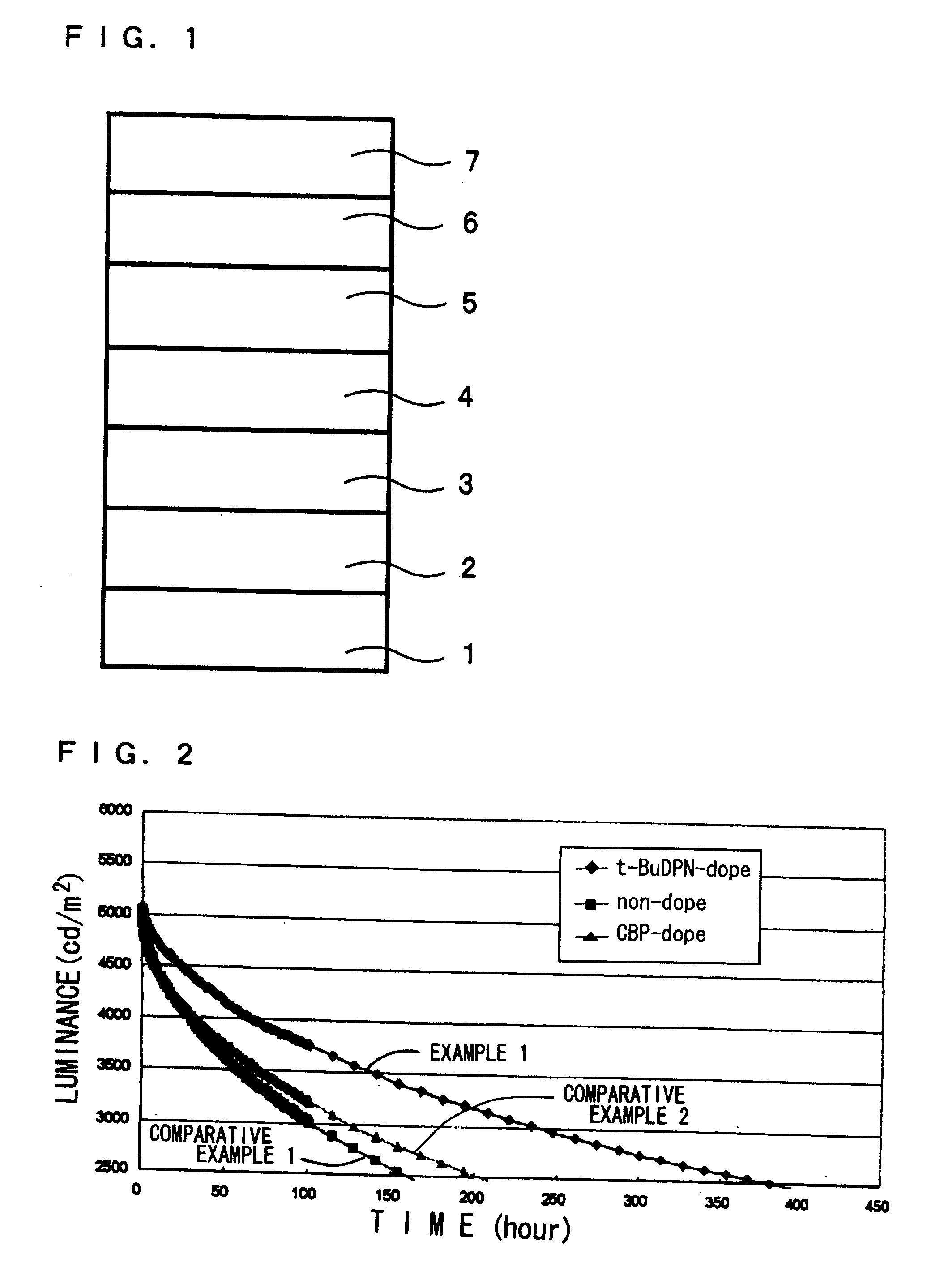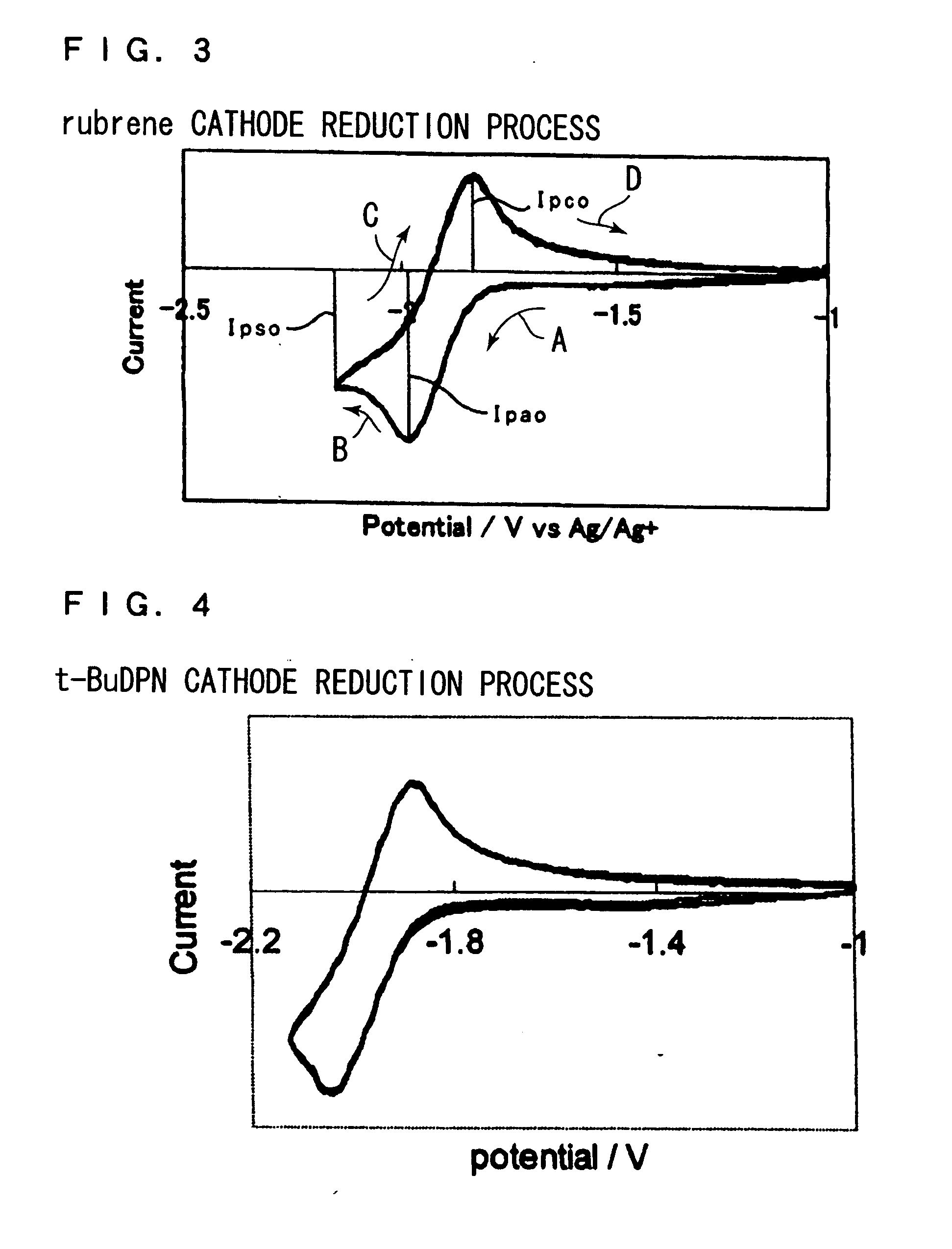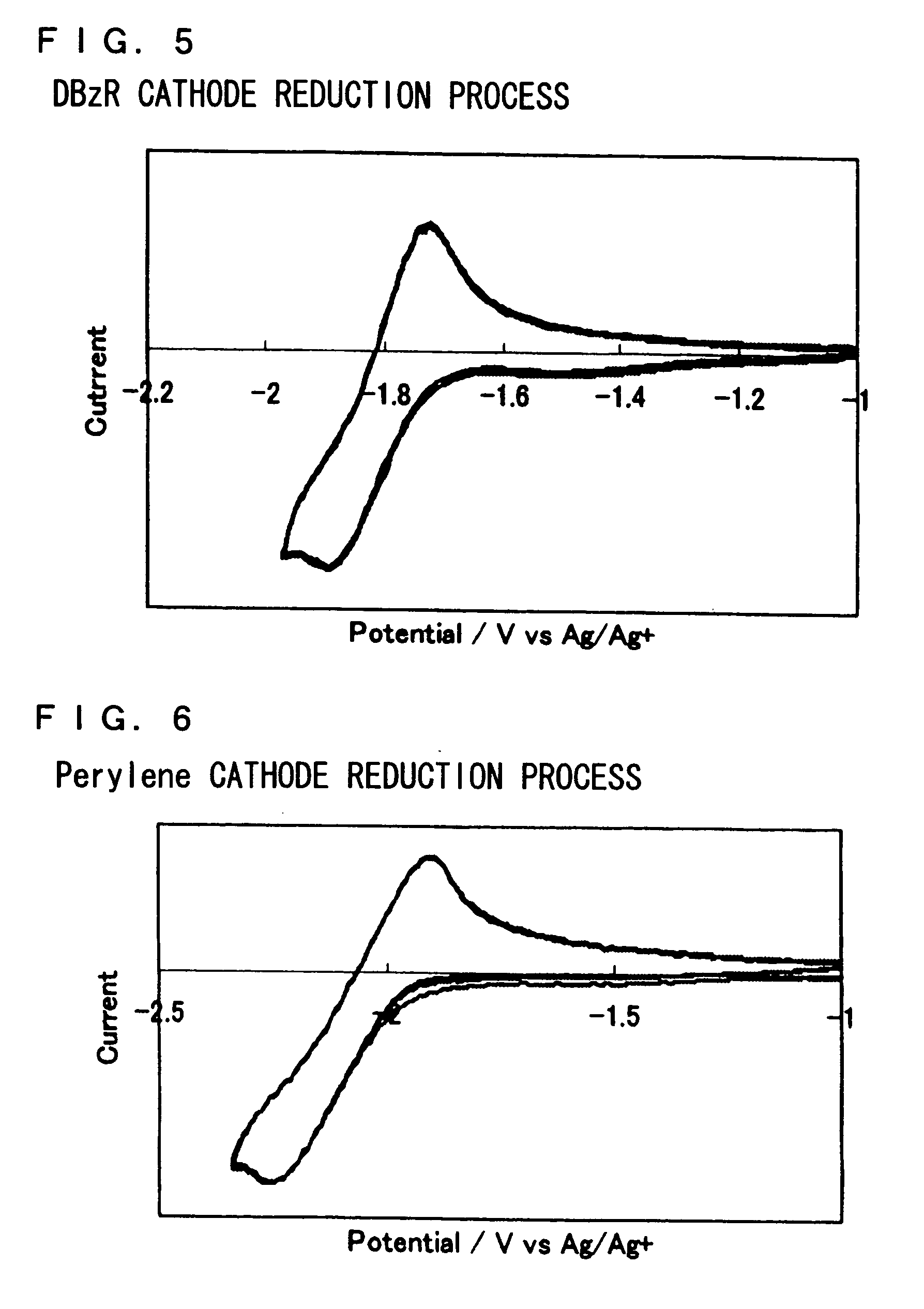Organic electroluminescence device
a technology of electroluminescence device and organic el, which is applied in the direction of luminescnet screen, discharge tube luminescnet, natural mineral layered products, etc., can solve the problems of unstable electron transporting substance, chemical change of substance, and so as to improve the properties of organic el device, the effect of preventing the deterioration of electron transporting material due to hol
- Summary
- Abstract
- Description
- Claims
- Application Information
AI Technical Summary
Benefits of technology
Problems solved by technology
Method used
Image
Examples
example 1
[0086] An organic EL device having a structure shown in FIG. 1 was prepared. In an organic EL device shown in FIG. 1, an anode buffer layer 2 is disposed on a hole injection electrode 1, a hole transporting layer 3 is disposed thereon, and a light emitting layer 4 is disposed thereon. A hole arresting layer 5 and an electron transporting layer 6 are disposed on a light emitting layer 4, and an electron injection electrode 7 is disposed on a electrode transporting layer 6. This organic EL device is prepared on a glass substrate. A hole injection electrode 1 is formed of ITO (indium tin oxide), and an anode buffer layer 2 (thickness 0.1 nm) using CFx is formed thereon. A hole transporting layer 3 (thickness 50 nm) containing 5% by weight of tBuDPN as an electron trapping material is formed thereon using NPB as a hole transporting material. A light emitting layer 4 (thickness 25 nm) consisting of CBP containing 6.5% by weight of Ir(ppy)3 is formed thereon. Ir(ppy)3 is tris(2-phenylpyri...
example 2
[0098] A white emitting organic EL device in which a light emitting layer was formed by laminating an orange emitting layer and a blue emitting layer, was prepared.
[0099]FIG. 10 is a cross-sectional view showing this white emitting organic EL device. As shown in FIG. 10, in this organic EL device, an anode buffer layer 12 is disposed on a hole injection electrode 11, and a hole transporting layer 13 is disposed thereon. An orange emitting layer 14 and a blue emitting layer 15 are disposed on a hole transporting layer 13 by lamination. An electron transporting layer 16 is disposed on these light emitting layers 14 and 15, and an electron injection electrode 17 is disposed on an electron transporting layer 16. This organic EL device is prepared on a glass substrate.
[0100] As in Example 1, a hole injection electrode 11 is formed of ITO, and an anode buffer layer 12 (thickness 1 nm) is formed of CFx.
[0101] A hole transporting layer 13 (thickness 110 nm) is formed of NPB containing 5%...
example 3
[0133] An organic EL device having a structure shown in FIG. 13 was prepared. In the organic EL device shown in FIG. 13, an anode buffer layer 22 is disposed on a hole injection electrode 21, a hole transporting layer 23 is disposed thereon, and a light emitting layer 24 is disposed thereon. An electron transporting layer 25 is disposed on a light emitting layer 24, and an electron injection electrode 26 is disposed on an electron transporting layer 25. This organic EL device is prepared on a glass substrate. A hole injection electrode 21 is formed of ITO (indium tin oxide), and an anode buffer layer 22 (thickness 0.1 nm) is formed thereon. A hole transporting layer 23 (thickness 50 nm) using NPB as a hole transporting material is formed thereon. A light emitting layer 24 (thickness 30 nm) consisting of Alq is formed thereon.
[0134] An electron transporting layer 25 (thickness 20 nm) uses BCP as an electron transporting material, and contains 5% by weight of m-MTDATA as a hole trapp...
PUM
| Property | Measurement | Unit |
|---|---|---|
| Percent by mass | aaaaa | aaaaa |
| Power | aaaaa | aaaaa |
| Power | aaaaa | aaaaa |
Abstract
Description
Claims
Application Information
 Login to View More
Login to View More - R&D
- Intellectual Property
- Life Sciences
- Materials
- Tech Scout
- Unparalleled Data Quality
- Higher Quality Content
- 60% Fewer Hallucinations
Browse by: Latest US Patents, China's latest patents, Technical Efficacy Thesaurus, Application Domain, Technology Topic, Popular Technical Reports.
© 2025 PatSnap. All rights reserved.Legal|Privacy policy|Modern Slavery Act Transparency Statement|Sitemap|About US| Contact US: help@patsnap.com



